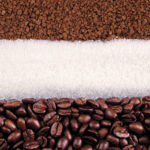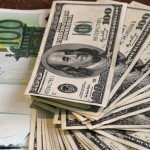 Gold held ground not far off the $1 200 mark before US policy makers conclude their last meeting for the year and as investors assessed tumbling oil prices and the possibility of Russia selling gold reserves. Silver, platinum and palladium rose. Copper slid under the pressure of ample supply, slowing Chinese manufacturing activity and as investors exited the commodity markets, prompted by tumbling oil prices.
Gold held ground not far off the $1 200 mark before US policy makers conclude their last meeting for the year and as investors assessed tumbling oil prices and the possibility of Russia selling gold reserves. Silver, platinum and palladium rose. Copper slid under the pressure of ample supply, slowing Chinese manufacturing activity and as investors exited the commodity markets, prompted by tumbling oil prices.
Comex gold for delivery in February gained 0.35% to $1 198.5 per troy ounce by 13:18 GMT, having shifted in a daily range of $1 203.1-$1 194.6 an ounce. The precious metal fell 1.11% on Tuesday to $1 194.3, but not before it dropped to $1 187.8, its lowest since December 8th.
The Federal Reserve ends today its eight and last policy meeting this year, with investors speculating whether officials will lose the “considerable time” tone they have been using in regard to keeping rates at rock bottom. Dropping the phrase would mean the central bank is preparing to lift interest rates next year amid continuing signs of robust economic recovery in the US.
Bernard Dahdah, an analyst at Natixis, said for CNBC: “The gold market will be closely following what the Fed says. That will dictate the price for the next few days. Well be looking at whether they move into a more data-dependent decision-making process in terms of the speed at which they will take things.”
An eventual increase in borrowing costs next year would boost the dollar and thus hurt the non-interest-bearing gold. However, US inflation is still below Fed’s targeted level and there are signs of weakness across Europe and Asia, which may tip the scales in favor of voting against a sooner US rate hike.
The US dollar index for settlement in March added 0.17% to trade at 88.450 at 13:22 GMT, prices held in a daily range of 88.525-88.085. The US currency gauge lost 0.43% on Tuesday to 88.297. A stronger greenback makes dollar-denominated commodities more expensive for holders of foreign currencies and curbs their appeal as an alternative investment, and vice versa.
Russia crisis
The oil market failing to find a stable floor further pressured the precious metal as cheaper oil means less inflationary pressures. Crude hovered near the lowest since mid-2009 as Russia reiterated its commitment to keep production next year close to 2014s 10.6 million barrels per day, echoing OPECs decision to keep pumping at the same pace.
Russia struggled for a second day to revive the collapsed ruble, with the Finance Ministry selling foreign currency after the central bank yesterday drastically raised its benchmark interest rate by 6.5% to 17%. Investors now watched closely whether Russia will tap its gold reserves to fund spending, which could push prices to $1 150 or even lower. Russia has tripled its stockpiles of the precious metal since 2005.
David Govett, head of precious metals at Marex Spectron Group, said, cited by Bloomberg: “They have been very good buyers of gold for a long time now and it would be entirely possible for them to sell some of this for conversion purposes.”
Overnight physical demand in Asia was also light as investors awaited Feds policy statement. Assets in the SPDR Gold Trust, the biggest bullion-backed ETF, fell for a second day by 1.8 tons to 721.56 tons on Tuesday.
Copper
Copper slid for a third day on Wednesday amid concerns that the cooling Chinese economy, the worlds top consumer, would require less supply of the metal used in wiring and construction.
Comex copper for delivery in March fell by 0.61% to $2.8410 per pound by 13:22 GMT, having earlier declined to $2.8270, the lowest since December 1st. The contract slid for a second day on Tuesday to $2.8585.
Copper remained under pressure following continuing signs of economic fatigue in China, while the countrys production of refined copper continued to rise. A preliminary private report showed yesterday that factory activity in China slowed for the first time in seven months in December, adding to a pile of downbeat data from the world’s biggest consumer of the metal.
Markit Economics reported that the HSBC Flash China Manufacturing PMI slid to 49.5 in December after stalling at 50.0 in November, hitting the lowest level in seven months and fueling expectations for additional monetary stimulus measures by the People’s Bank of China. The output sub-index was at 49.7 from 49.6 in November, while new orders entered the contraction zone as domestic demand slowed considerably. Price indices also marked a sharp fall.
Meanwhile, data by China’s National Bureau of Statistics showed that the country’s refined copper production hit a record for a fourth straight month as high processing fees and abundant supply of raw material prompted smelters to ramp up operations. Output rose by 3.1% last month to 755 492 tons from 732 746 tons in October.
An improvement in European business activity this month, coupled with better economic sentiment, provided minor support, but expectations for a significant global supply surplus next year kept a shadow over long-term sentiment. Meanwhile, the continuing oil rout and crisis in Russia scared investors away from the riskier commodity markets and prompted safe haven bids.





